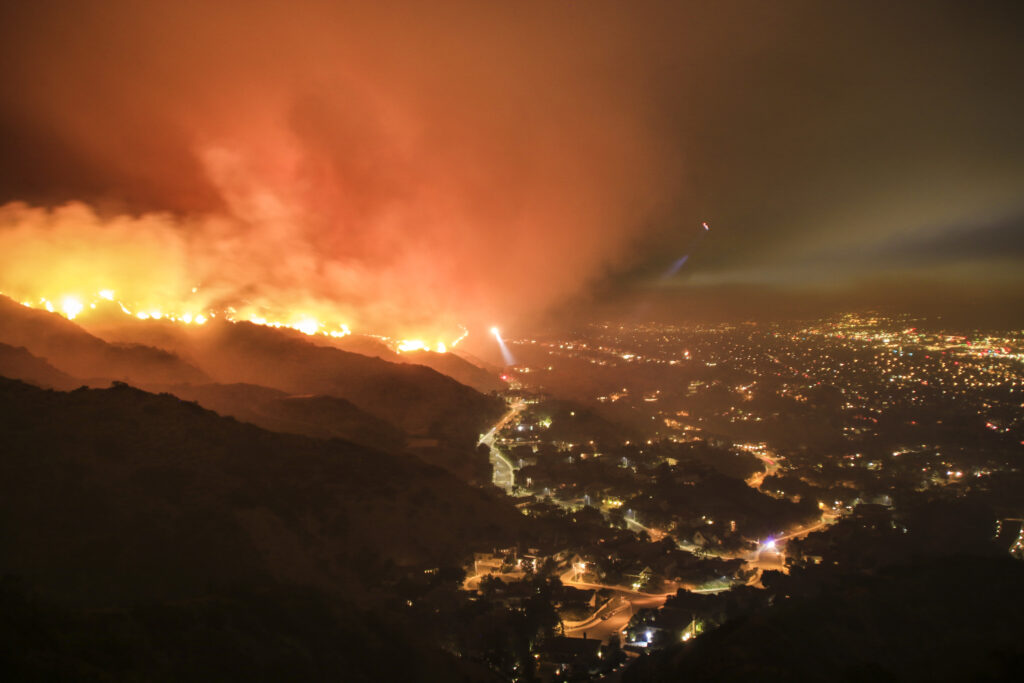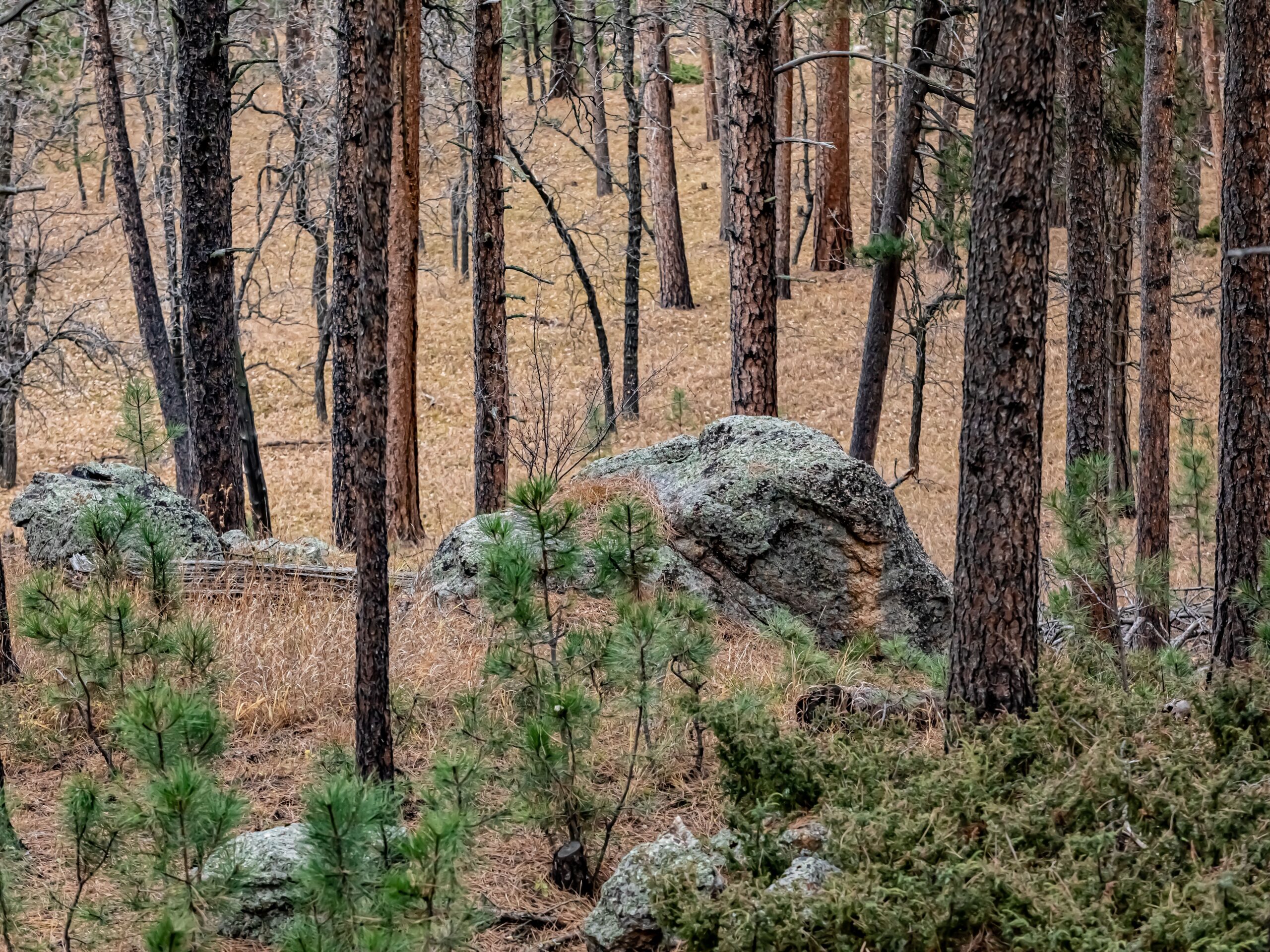
This article was originally published in National Review.
The aftermath of January’s devastating wildfires in the Los Angeles area has left Californians searching for answers and looking to affix blame. The blaze destroyed more than 12,000 homes and businesses and claimed more than two dozen lives. It left a scar on not just the landscape but the psyche of a region that has long wrestled with the grim reality of wildfire.
America has been here before. It was called the Big Burn.
In 1910, a combination of record-low precipitation, severe lightning storms, and train sparks ignited several small fires in Montana and Idaho. The situation generated enough concern to mobilize 9,000 firefighters, including U.S. Army troops. Then a dry cold front swept through, bringing 70-mile-per-hour winds that merged the fires into a single, unstoppable inferno that overwhelmed firefighting resources. The epic wildfire that became known as the Big Burn consumed 3 million acres of forests. Eighty-five lives were lost. Towns were wiped from the map. And while the economic loss was not as severe as what California just experienced, the national outcry to “do something” was similarly loud.
In the case of the Big Burn, “Do something” meant a dramatic shift in forest management. Fire suppression at all costs became the mission of the fledgling U.S. Forest Service, an approach that would end up shaping the next century of forest policy. The burn even led to the so-called 10 a.m. rule—an edict that all forest fires be put out by 10 a.m. the following day.
While this approach reduced the immediate risk of fire, it ignored the natural role of fire in forest ecosystems. Historically, frequent low-intensity ground fires—caused by lightning or intentionally set by Native Americans—cleared out underbrush and maintained forest health. Decades of suppression policies, however, put an end to that and allowed forests to grow unnaturally dense, turning them into tinderboxes waiting for the next spark. In California’s Sierra Nevada, for example, forest density is six to seven times higher than it was a century ago.
Today, over 80 million acres of U.S. national forests require some form of restoration to address these hazardous fuel loads. This includes proactive measures such as prescribed burning, which mimics natural fire cycles to reduce underbrush, and mechanical thinning, where excess trees and vegetation are removed to reduce fire risk. Yet instead of focusing on proactive measures to restore forest health, federal policies remain mired in outdated approaches and regulatory obstacles, hindering effective management while delaying the very projects essential for reducing fire risks.
The lesson from the Big Burn is to not learn the wrong lesson—doing so can be just as dangerous as ignoring the problem entirely. A century of fire suppression has only compounded the crisis, worsened by policies that obstruct proactive forest restoration efforts. And while climate change exacerbates the risk of extreme wildfires, it is not the sole or even primary driver of the problem. California’s recent fires are a testament to the failed approach of prioritizing suppression and long-term climate initiatives over proactive here-and-now forest management that could actually address the problem.
California, a state often hailed as a leader in environmental policy, has ironically become a cautionary tale. Its aggressive climate policies—while ambitious—have done little to address forest health and mitigate the growing severity of wildfires. During one recent season, wildfires in the state released 112 million metric tons of carbon—the equivalent emissions of nearly 25 million cars on the road for one year. A UCLA study found that California’s 2020 wildfire emissions were double the greenhouse gas reductions the state had achieved over the previous two decades, effectively undoing years of progress in a single season.
But California is not solely to blame. Federal regulations governing forest management are also major impediments. Federal agencies own and manage 19 million acres of California’s forests, amounting to almost 60 percent of the state’s forested land. Since the 1970s, environmental regulations—initially designed to curtail destructive logging practices—have evolved into a labyrinth of red tape that delays even beneficial projects. Policies such as the National Environmental Policy Act (and its state-level counterpart, the California Environmental Quality Act) require extensive environmental reviews for activities designed to improve forest health, including mechanical thinning and prescribed burns. While well-intentioned, these laws often delay critical restoration work for years.
Recent research by the Property and Environment Research Center highlights just how cumbersome NEPA reviews have become. On average, it takes 3.6 years to begin a mechanical thinning project and 4.7 years to implement a prescribed burn after the U.S. Forest Service initiates the environmental review process. For large projects requiring environmental impact statements, the time line stretches even longer, averaging 5.3 years for mechanical treatments and 7.2 years for prescribed burns.
When litigation is factored in—a frequent occurrence in the West—the delays become even more pronounced. A recent study by the California-based Breakthrough Institute found that NEPA-related litigation adds an average of 3.7 years to forest management project time lines, with environmental litigants prevailing in less than a quarter of cases. In other words, the authors write, “the rate at which agencies’ reviews are upheld is high, meaning these environmental reviews are seldom changed as a result of litigation.”
And while the benefits of additional review are in doubt, what is clear is the cost of delay. Consider the Pumice Project in California’s Klamath National Forest. Designed by the Forest Service to improve forest health and protect wildlife habitat, the 10,000-acre thinning project faced nearly a decade of delays as a result of activists claiming it would harm the habitat of the spotted owl, whose numbers have been declining. In 2021, before any restoration work could begin, the Antelope Fire swept through the area, destroying the very habitat the activists sought to protect. Similar stories abound across the West, where misguided activism often obstructs the urgent work of forest restoration.
Fortunately, a scientific consensus on the need for active forest management is growing. Researchers and wildfire experts overwhelmingly agree that prescribed burns and mechanical thinning are essential tools for reducing fuel loads and restoring forests to more natural, resilient conditions. Many environmental groups now acknowledge the importance of these practices, though opposition remains strong from a small group of litigious environmental activists who weaponize environmental laws to block restoration projects. As Crystal Kolden, a wildfire scientist at the University of California, Merced, recently told the Sacramento Bee in response to delays caused by such forest-science deniers, “I and my colleagues are getting really tired of the type of activism that pretends to be science and in fact is just self-serving garbage.”
To the Biden administration’s credit, its Wildfire Crisis Strategy, announced in 2022, represented a step in the right direction, recognizing fuel loads in our forests as a crisis unto itself and aiming to treat millions of additional acres to reduce wildfire risks. While the administration deserves credit for elevating the need to accelerate forest management, it was more reluctant to tackle the regulatory barriers and litigation delays that slow project implementation. Worse, in some cases, it opposed bipartisan efforts to streamline forest restoration processes, seemingly to appease environmental activist groups.
But the forest restoration landscape is changing. In the last Congress, two bipartisan bills aimed at accelerating forest restoration gained significant traction. The first, led by Senator Steve Daines (R., Mont.), sought to address the Ninth Circuit’s Cottonwood decision. The head-scratching ruling from this case requires duplicative layers of consultation with the U.S. Fish and Wildlife Service, leading to redundant and unnecessary delays in forest management projects. And because the Cottonwood decision applies only to states in the Ninth Circuit, such as California, this extra layer of red tape conflicts with how forests are managed in other parts of the country, including Colorado, Wyoming, and New Mexico. A “Cottonwood fix” passed out of the Senate Energy and Natural Resources Committee on a bipartisan vote in 2023 and the full House last year, but it has failed to receive a final vote in the Senate.
The second, the Fix Our Forests Act, co-sponsored by Representatives Scott Peters (D., Calif.) and Bruce Westerman (R., Ark.), proposes a suite of commonsense reforms to expedite restoration work. The bill aims to streamline NEPA reviews, designate fire-shed management areas, expand the use of categorical exclusions from NEPA for beneficial forest restoration projects under 10,000 acres, and end frivolous litigation holding up restoration efforts.
Last year, the Fix Our Forests Act passed the House of Representatives with support from 55 Democrats, including former speaker of the House Nancy Pelosi and 14 other California Democrats. Unfortunately, thanks in part to opposition by the Biden administration, it failed to reach the Senate floor. In the wake of the L.A. fires, the bill has now been reintroduced in the new Congress, presenting a renewed opportunity for meaningful reform.
The causes of California’s wildfires are many, nuanced, and complex. The January fires were the result of a perfect storm of factors. It is important that we learn the right lessons. Reactionary policies and misplaced priorities have shaped forest management for too long, often compounding the problem. California’s devastating fires should prompt thoughtful, targeted action to address the underlying issues. Proactive forest restoration, supported by bipartisan cooperation and streamlined regulations, is not just necessary—it is imperative. The stakes are clear: Lives, communities, and ecosystems depend on our ability to act decisively and effectively.



